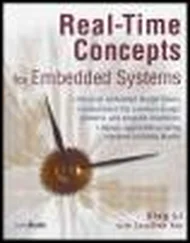Thomas Limoncelli - Time Management for System Administrators
Здесь есть возможность читать онлайн «Thomas Limoncelli - Time Management for System Administrators» весь текст электронной книги совершенно бесплатно (целиком полную версию без сокращений). В некоторых случаях можно слушать аудио, скачать через торрент в формате fb2 и присутствует краткое содержание. Жанр: Старинная литература, на английском языке. Описание произведения, (предисловие) а так же отзывы посетителей доступны на портале библиотеки ЛибКат.
- Название:Time Management for System Administrators
- Автор:
- Жанр:
- Год:неизвестен
- ISBN:нет данных
- Рейтинг книги:4 / 5. Голосов: 1
-
Избранное:Добавить в избранное
- Отзывы:
-
Ваша оценка:
- 80
- 1
- 2
- 3
- 4
- 5
Time Management for System Administrators: краткое содержание, описание и аннотация
Предлагаем к чтению аннотацию, описание, краткое содержание или предисловие (зависит от того, что написал сам автор книги «Time Management for System Administrators»). Если вы не нашли необходимую информацию о книге — напишите в комментариях, мы постараемся отыскать её.
Time Management for System Administrators — читать онлайн бесплатно полную книгу (весь текст) целиком
Ниже представлен текст книги, разбитый по страницам. Система сохранения места последней прочитанной страницы, позволяет с удобством читать онлайн бесплатно книгу «Time Management for System Administrators», без необходимости каждый раз заново искать на чём Вы остановились. Поставьте закладку, и сможете в любой момент перейти на страницу, на которой закончили чтение.
Интервал:
Закладка:
Indicates new terms, URLs, email addresses, filenames, file extensions, pathnames, directories, and Unix utilities.Constant width
Indicates commands, options, switches, variables, attributes, keys, functions, types, classes, namespaces, methods, modules, properties, parameters, values, objects, events, event handlers, XML tags, HTML tags, macros, the contents of files, or the output from commands. Constant width bold
Shows commands or other text that should be typed literally by the user. Constant width italic
Shows text that should be replaced with user-supplied values.
Tip
This icon signifies a tip, suggestion, or general note.
Warning
This icon indicates a warning or caution.
Using Code Examples
This book is here to help you get your job done. In general, you may use the code in this book in your programs and documentation. You do not need to contact us for permission unless you're reproducing a significant portion of the code. For example, writing a program that uses several chunks of code from this book does not require permission. Selling or distributing a CD-ROM of examples from O'Reilly books does require permission. Answering a question by citing this book and quoting example code does not require permission. Incorporating a significant amount of example code from this book into your product's documentation does require permission.
We appreciate, but do not require, attribution. An attribution usually includes the title, author, publisher, and ISBN. For example: "Time Management for System Administrators by Thomas A. Limoncelli. Copyright 2006 O'Reilly Media, Inc., 0-596-00783-3."
If you feel your use of code examples falls outside fair use or the permission given above, feel free to contact us at permissions@oreilly.com.
We'd Like to Hear from You
Please address comments and questions concerning this book to the publisher:
O'Reilly Media, Inc.
1005 Gravenstein Highway North
Sebastopol, CA 95472
(800) 998-9938 (in the U.S. or Canada)
(707) 829-0515 (international or local)
(707) 829-0104 (fax)
We have a web page for this book, where we list errata, examples, and any additional information. You can access this page at:
http://www.oreilly.com/catalog/timemgmt
To comment or ask technical questions about this book, send email to:
bookquestions@oreilly.com
You can contact the author at his web site or via email:
Web: http://www.everythingsysadmin.com
Email:timebook@everythingsysadmin.com
For more information about our books, conferences, Resource Centers, and the O'Reilly Network, see our web site at:
http://www.oreilly.com
Safari® Enabled

When you see a Safari® Enabled icon on the cover of your favorite technology book, that means the book is available online through the O'Reilly Network Safari Bookshelf.
Safari offers a solution that's better than e-books. It's a virtual library that lets you easily search thousands of top tech books, cut and paste code samples, download chapters, and find quick answers when you need the most accurate, current information. Try it for free at http://safari.oreilly.com.
Acknowledgments
This book would not be possible without the help of Chris Polk, who supported me both emotionally and technically throughout the entire project. Every chapter was influenced by her helpful suggestions.
Thanks to David Blank-Edelman for his touching Foreword, and to Illiad for his User Friendly comic strips. I feel doubly blessed to have both of you involved.
I'd also like to thank the O'Reilly staff for their help, especially Mike Loukides for bringing this project to O'Reilly and helping to define the book, and David Brickner who got the book into shape so it could be published. David took an OK book and turned it into a great book. I couldn't have done it without him. Marlowe Shaeffer, my production editor, brought these pages to life. Thanks to everyone at O'Reilly!
If I see farther than others, it's because I stand on the shoulders of greatness. Some of these great people are: Mary Clark, Benji Feen, Doug Furlong, Trey Harris, Jennifer Joy, Andy Lester, R. A. Lichtensteiger, John Linderman, Les Lloyd, Ralph Loura, Tina Mancuso, Cliff Miller, Adam Moskowitz, Daisy Nguyen, Cat Okita, JP, Victor Raymond, Tom Reingold, Michael Richichi, Strata Rose-Chalup, Glenn Seib, Frank J. T. Wojcik, and apologies to anyone I have forgotten!
Chapter 1. Time Management Principles
Wait! Before we get started, let's do something to make sure we actually finish.
I realize that as a system administrator (SA), you are flooded with constant interruptions. The phone rings, a customer! [*]stops by with questions, your email reader beeps with the arrival of a new message, and someone on Instant Messenger (IM) is trying to raise your attention. Heck, I bet someone's interrupted you while reading this paragraph.
I'm not going to cover how to deal with interruptions until the next chapter, and I hope you don't take offense, but at this rate, I'm worried you won't get that far. To mitigate this problem I'm going to share a tip from Chapter 2, which, if you implement, will shield you from interruptions between now and when we can deal with the subject of interruptions properly.
Suppose you are in an environment with two SAs. You and your coworker can agree to establish a mutual interruption shield . Before lunch, you field all the interruptions so that your coworker can work on projects. After lunch, your coworker fields all the interruptions and lets you work on projects. Obviously, if there is an emergency or an urgent request that only you can handle, you'll drop what you're doing. However, you'll find that by organizing your days like this, you'll see an immediate improvement in the amount of project work you get done. You may also find some time to read this book.
This method works particularly well when there are a lot of SAs. I was once part of a very large admin team, and we were able to assign time slots of "interruption catching" that let the entire rest of the team focus on project work for all but one hour a day.
This method can be adapted to a solo SA, too. If you are a solo SA, talk with your manager about how you could improvise some kind of equivalent system. For example, management can make the users aware that afternoons are reserved for "project time ," and non-urgent requests should be emailed to you (or to your request-tracking system) for processing the next morning. This might match the natural flow of an office. For example, if most interruptions happen in the morning, it will be easier to schedule the afternoon as "project time." It may be more appropriate to do that only when a special, visible project is coming due. For example, your boss assigns you a project that will benefit many aspects of the company. This is an opportunity to ask for special dispensation so that the project can get done quickly.
There are also physical things you can do to protect your "project time." Obviously, if you have an office, you can close your door to prevent casual drop-ins and social visits. A more effective technique is to make sure that customers must walk past your Tier 1 (customer-facing) system administrators in order to get to Tier 2 people (you). If you are the senior SA, re-arrange your seating so that people must pass by a junior SA on their way to you. The role of a junior SA is to handle 80 percent of the interruptions and let the 20 percent that only you can do, get to you. Physical location is key to this. Walk 50 feet from your desk, turn around, and walk back to where you sit while imagining you are a typical customer. What do you see? Make sure it is the person who is supposed to be customer-facing and working on all the Tier 1 support requests.
Читать дальшеИнтервал:
Закладка:
Похожие книги на «Time Management for System Administrators»
Представляем Вашему вниманию похожие книги на «Time Management for System Administrators» списком для выбора. Мы отобрали схожую по названию и смыслу литературу в надежде предоставить читателям больше вариантов отыскать новые, интересные, ещё непрочитанные произведения.
Обсуждение, отзывы о книге «Time Management for System Administrators» и просто собственные мнения читателей. Оставьте ваши комментарии, напишите, что Вы думаете о произведении, его смысле или главных героях. Укажите что конкретно понравилось, а что нет, и почему Вы так считаете.












